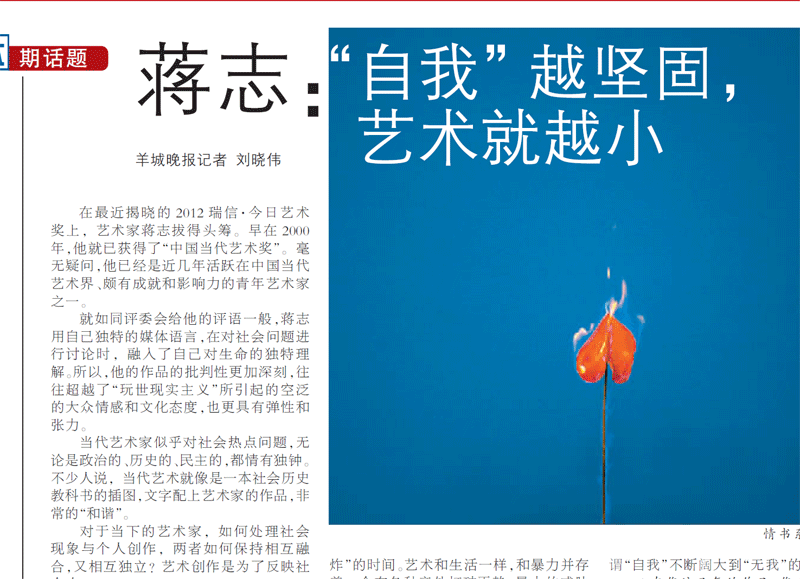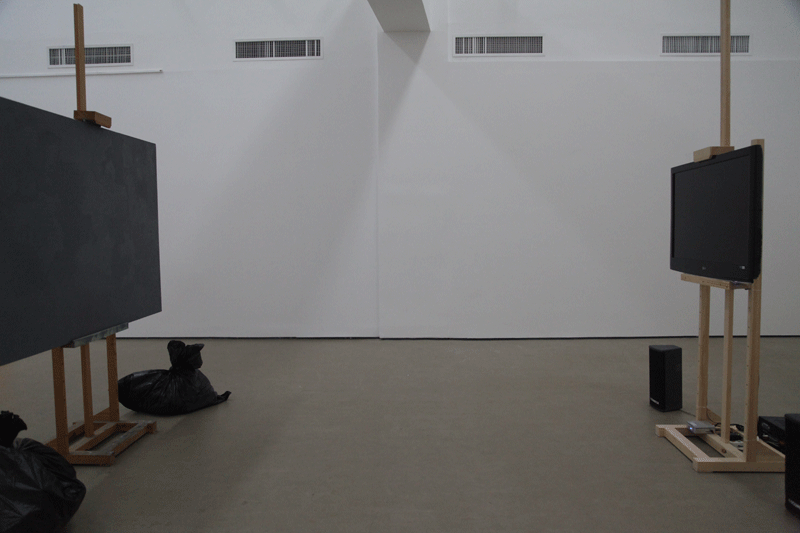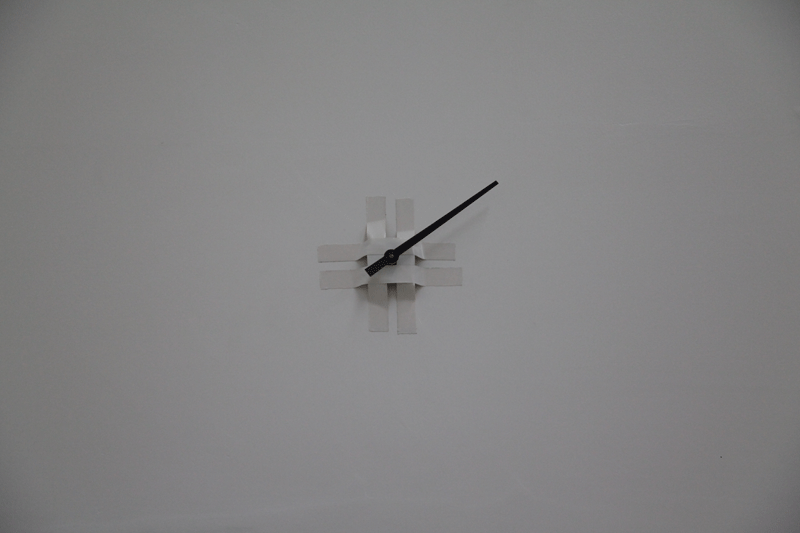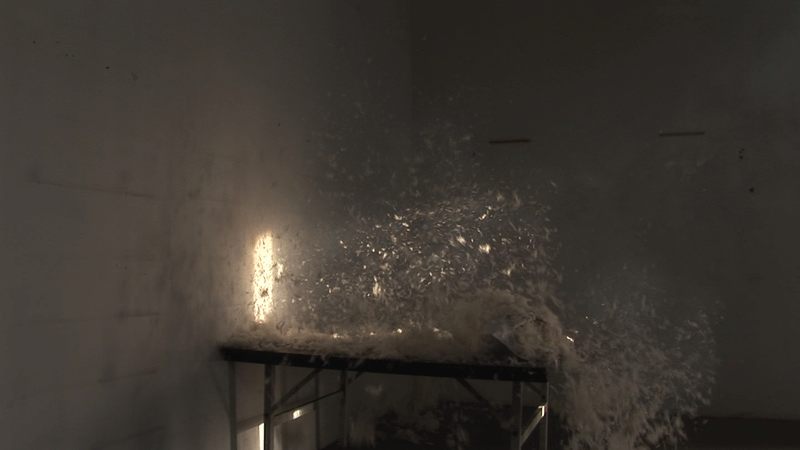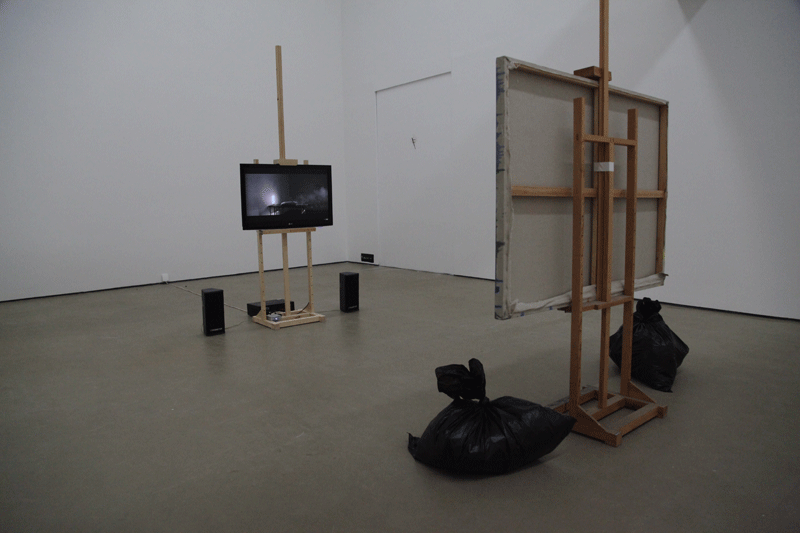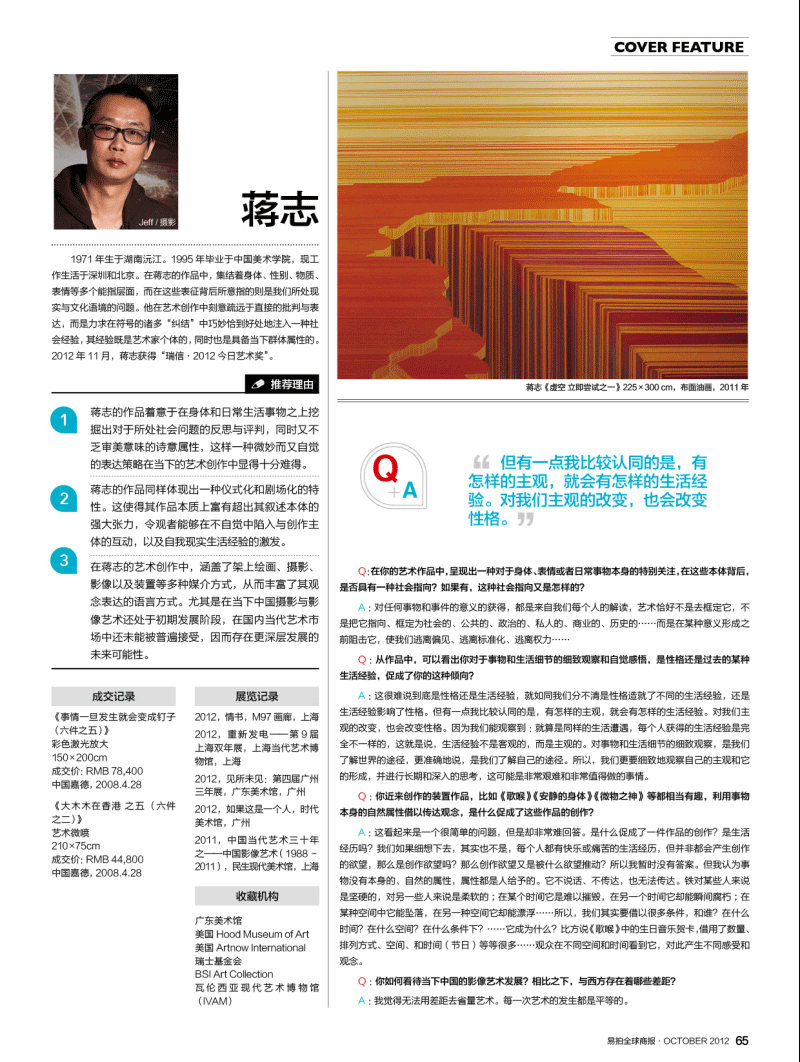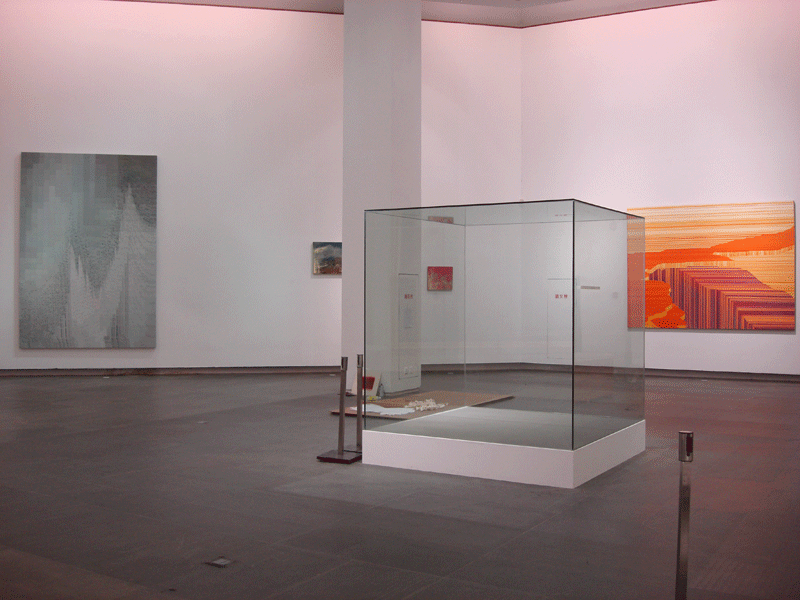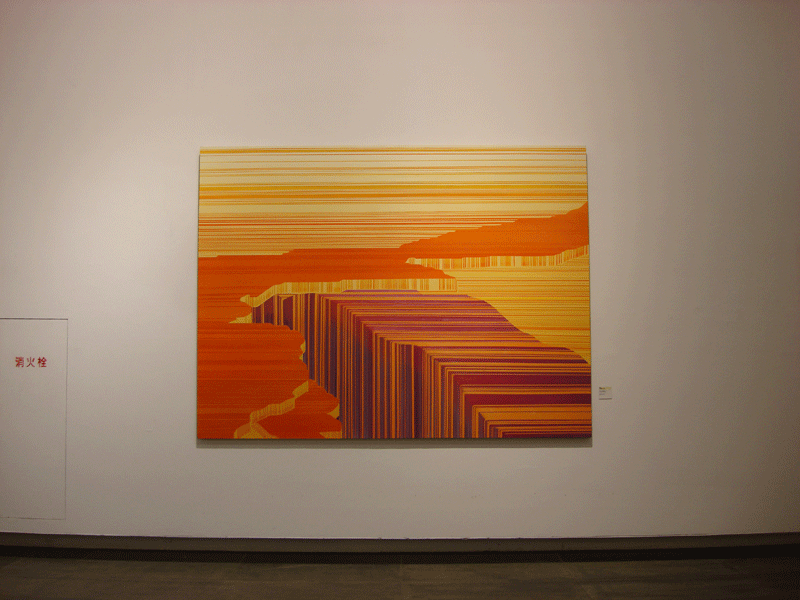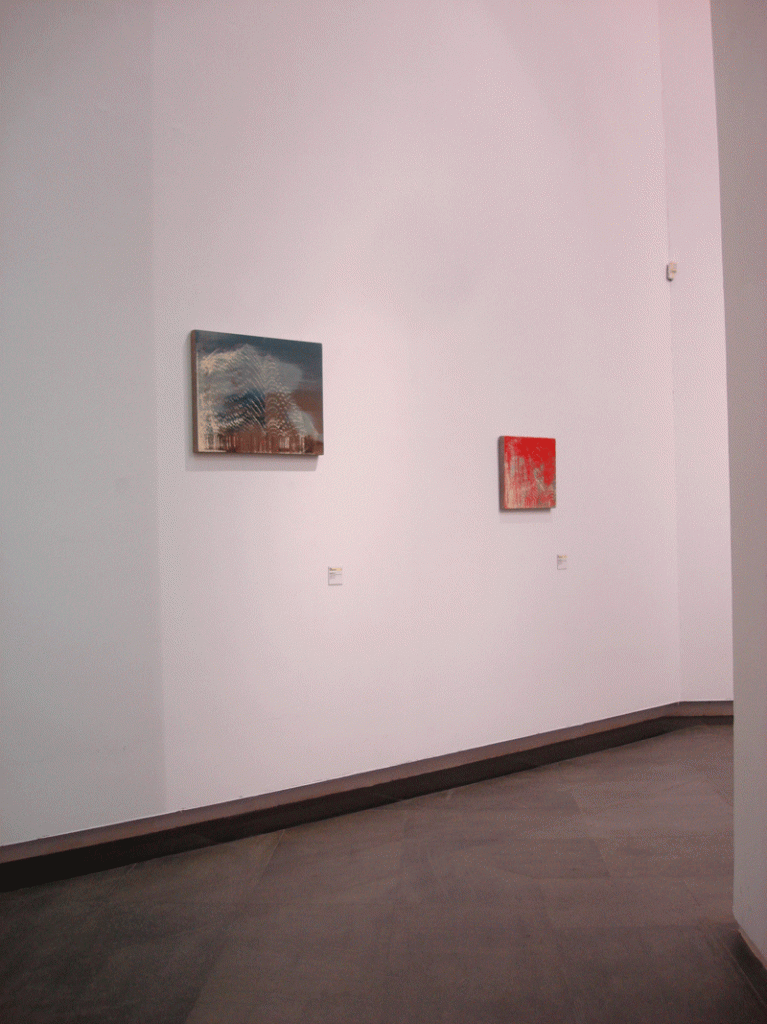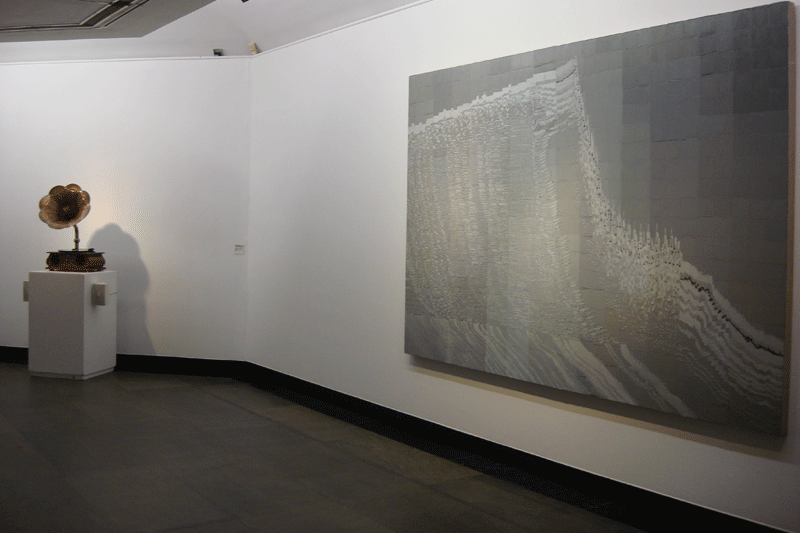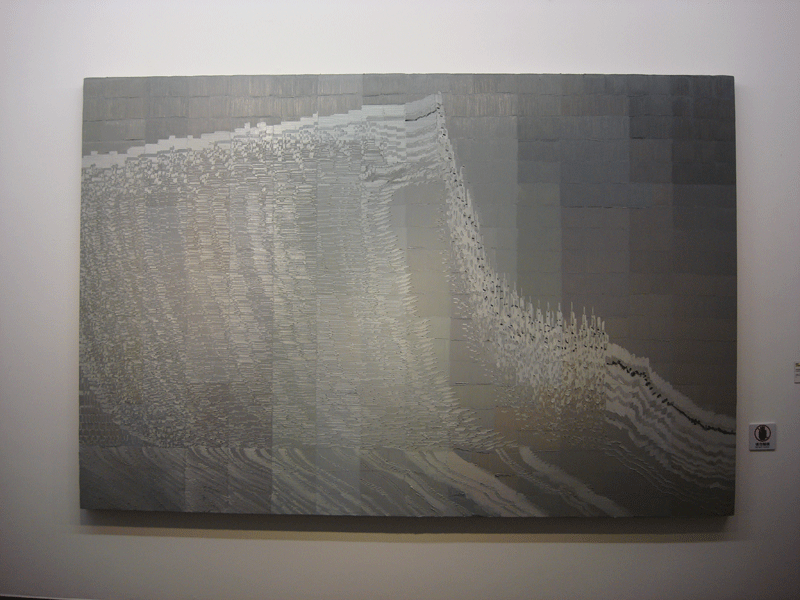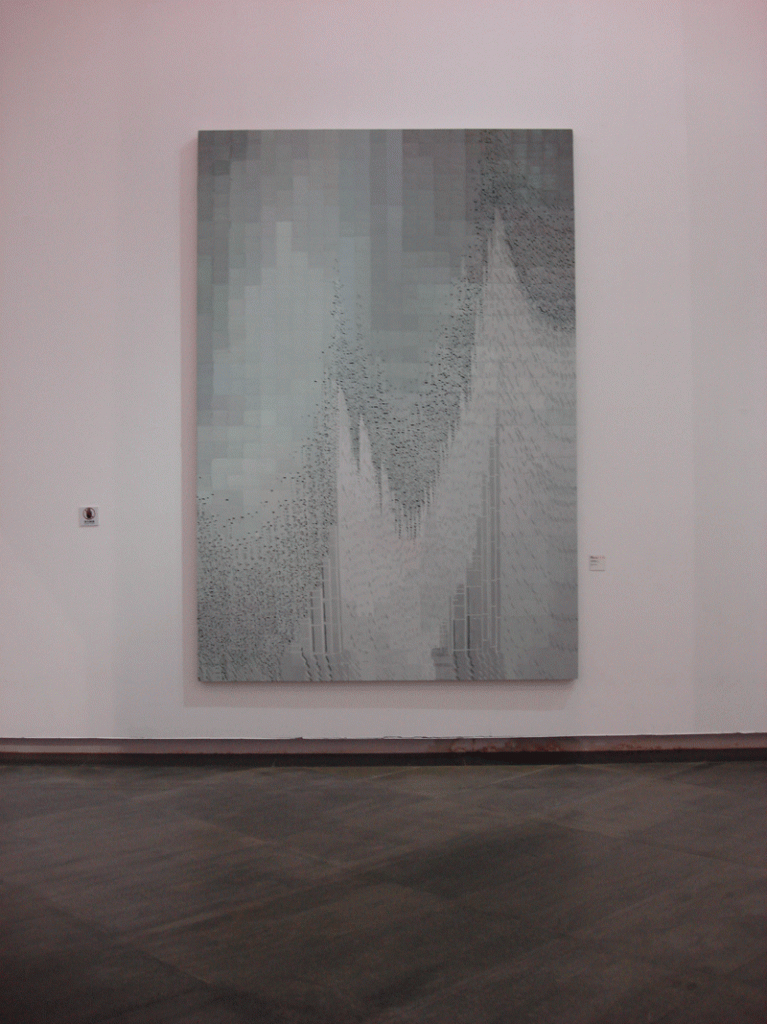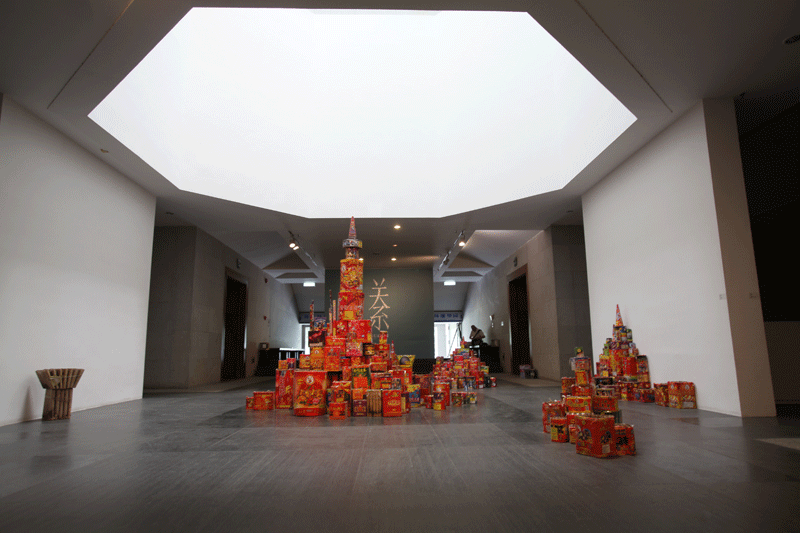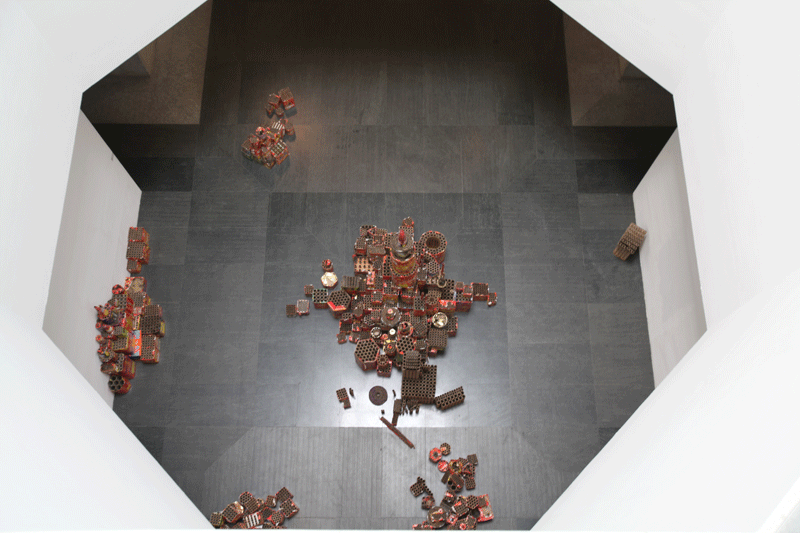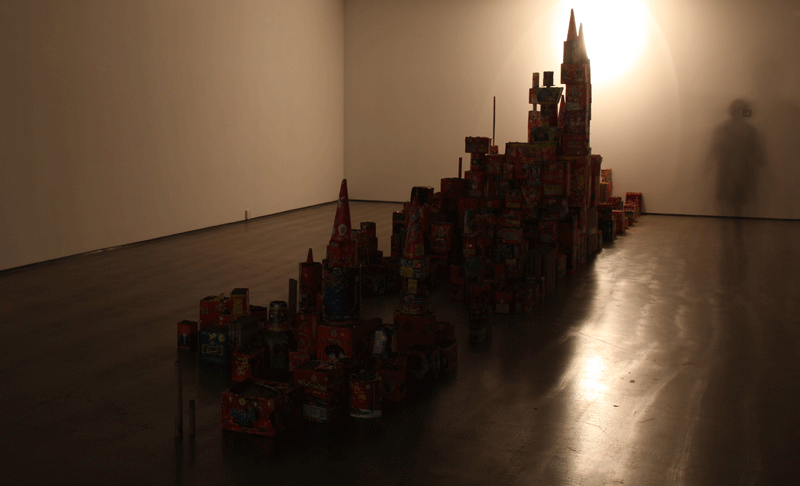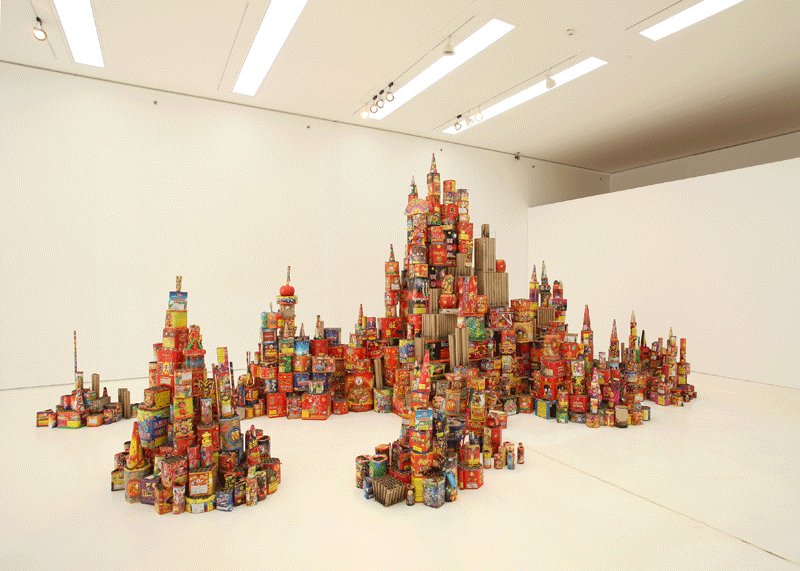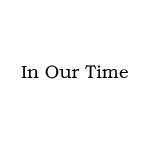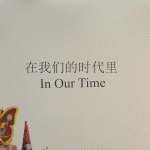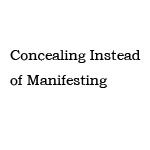
Christina.Y.Z
If we dated back to 1997, the time when Jiang Zhi began his early artistic creation, since then he has been exploring varied words and expressions to define and counter- define his art territory. In 2006 he developed a series of motif-works with the use of light, such as his ” Once Things Happen ” series, in which it revealed not only he is extremely sensitive but also he positively feeds back towards the social issues in his time and era. In 2008, his work ” 0.7% of salt ” was closely associated with the issues of sociology and which raised doubts unto the relationship between objective events and subjective psychic reactions through the analysis on the specific social events. He expressed his poetic characteristics through the varied definitions of his art works.
Light in Prophet ‘s book metaphors “revelation”, I think Jiang Zhi ‘s art work beholds this kind of interesting track of “revelation”. We once had a short discussion on ” the light of revelation “, I asked : “You do like highlight and expose the hidden secrets of the world, don’t you ? ” He answered: “I tend to use an old saying from China ” hide one’s capacities and bide one’s time”, and for the revealing and manifesting of “light” that is the way of God, once if our human wants to ” demonstrate” something, it will become the light of prejudice, the way of demonstration will finally be non-exist. As I read from an old Chinese literature book: “Heaven and earth is not self-generated, so it can live long or forever.” ”
After “Once Things Happen” series, he created ” The Transient Light ” in early 2011, and in the following year he created ” God of Small Things “ ; they are all about descriptions of varied light.
Jiang Zhi created two series of art works in the year of 2013; one series is his creation according unto the computer screen system’s mal-function; another one is a video, it is called “Bad World.” He insists that “Bad World” echoes to “bad infinity” which was raised by Hegel. The images were taken in Maldives by a bad camera in June of 2013. It is a camera immersed in water on July 21, 2012 in Pekin, some people lost their lives at that day due to the heavy rain, and Pekin was really heavily flooded on that day. Jiang Zhi’s study room was also flooded, the camera was there then, therefore it still can shoot but it presents another kind of image. But Jiang Zhi believes this kind of image is equal to any other kind of image. He did not abandon this “bad” camera instead he continues to take pictures and shooting videos with it. When I make an analogy between this “bad” camera to the ” blind eye” , Jiang Zhi declared: “It is not blind , it is just showing us a different perception.” Then I think I can comprehend a bit of his art creative intention: Through this ” bad” camera we should not only see the appearance of “blindness”, instead it activates yet another perceptions from ourself towards the exterior world. He actively inspiring the viewer to be stimulated to use another visual angle, or a kind of multidimensional way of seeing, the viewer may perceive more, and the screen will not be void and insignificant then.

Bad World video 2013
When Jiang Zhi insists to explore another viewing channel with viewers and his “blind eye”, then we may question: After things are corrupted, after the intervals and stagnations of time, what is the significance of being? “Bad World ” is no longer a remote event that had been published on an outdated newspaper, Jiang Zhi brought it out from the limitation of time, and from the retrospection of this event, then every one of us should reflect towards our own significance of life.

For the understanding of phenomenon Jiang Zhi admitted: “All things are built by perceptions and all things are perceptions.” After our discussion, he repeatedly stressed: “All the art works are the fruits of subjectivity; they are the representations of the author; also they are in front of the viewer ‘s subjective preferential observation, for the subjectivity which is unfixed and changeable, then there will exist neither a determined visual perception or art work, nor there will have the determined representation or event. ”
Jiang Zhi considers the appearance has the characteristics of inauthenticity and concealing. He supposes, in our daily life, we live in our own imaginations and illusive consciousnesses in the unpredictable and changeable social and cultural context. I consider, the experience of Modernity , such as Benjamin once had described in a century ago: “it is a mechanical reproduction era ” and ” the era of commodity fetishism”. I think that for facing such a destructive, painful experience, we often want to make ourself to be a spectator, or to be a clear minded “marginal observer”. But Jiang Zhi objected me: ” If we are awake, we will be able to clearly know that we will never be “a bystander “, because there will never exist an “event ” beyond your subjective observation, or there will never exist an “observation” in an objective system. So there will never exist an “event ” beyond the subjective perception, and the “event” is changing unceasingly. Only those who do not have a clear mind will hold the illusion that they can go beyond the subjective “event” .”
His new work, as he has said: “For the external world, we can never see it. …… All we can see are our own world. ……For the external world, we can never see it directly. If we can never truly experience the external world, does it really exist? What can we attain is only our own world. ” ( ” Faulty Display ” Jiang Zhi ) Finally, I conclude from his deduction: A watching towards art will become an observation towards ourself. We will meet our “another self” in the artist’s creation.
I always appreciate when Breton replied his appreciations for St. Boer’s poetry: “What the Poet wanted to say that had been said .” But Jiang Zhi believes: ” The poet might be more humble, he might say, it is the language which speaks , while himself, mostly, but a lucky recorder, or even he has not been that lucky, because he was not fortunate enough to have the ability to reveal the whole truth. In this situation, sometime, if the poet is lucky enough, he is but the one who has been written by the truth itself.
As for Jiang Zhi, he does not agree that an artist needs to speak clearly everything in his artistic creation, he insists that who claims in the work he has to say some” valuable words “which is undoubtedly arrogant and deceitful, it will be an oppression and an intention of controlling over the viewer. He clarifies: A good author is whom does not speak much in his work.
When we were discussing ” manifesting ” , he insisted “going back and abide concealing”.
September 14th, 2013 In Venice
]]>



